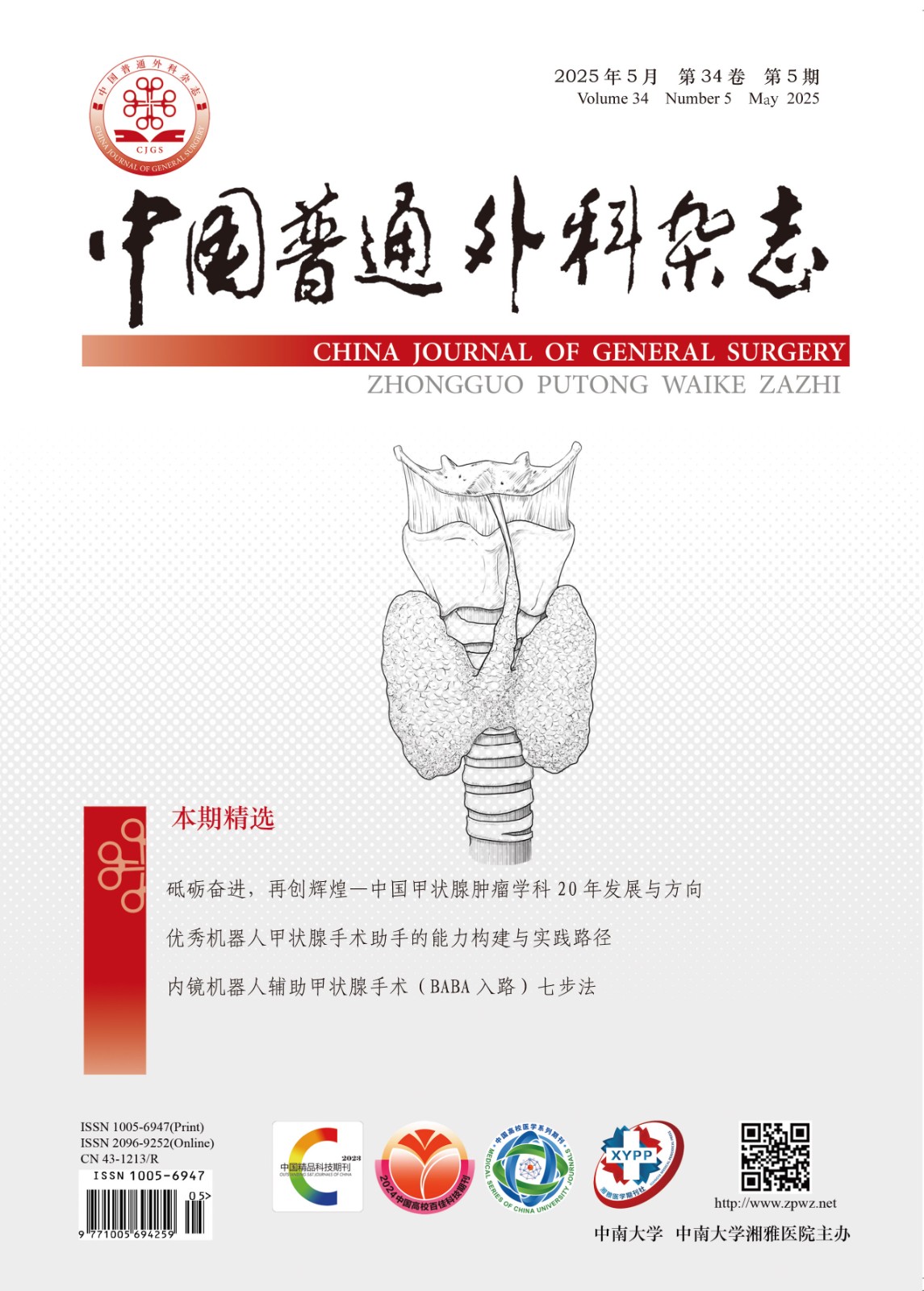Abstract:
Objective:To evaluate the short-term clinical outcome of precise hepatectomy for liver neoplasms.
Methods:A prospective, non-randomized controlled study was conducted on 143 selected patients with liver neoplasms admitted to our Hospital in recent two years. Of the patients, 84 cases undergoing precise hepatectomy were designated as observation group and 59 cases undergoing conventional hepatectomy were used as control group. The indexes of the perioperative conditions between the two groups were compared. Hepatic lobectomy or segmentectomy was performed in the patients of precise hepatectomy with hemihepatic vascular occlusion or without vascular occlusion. Conventional hepatectomy was performed using clamp-crushing method under total vascular occlusion.
Results:The mean operative time of the observation group was significantly prolonged compared with the control group [(134±86) min vs. (71±52) min, (P<0.01)]. No difference was noted between the two groups (P=0.055) in the mean intraoperative bleeding volume, which was (274±186) mL in the observation group and (340±220) mL in the control group (P>0.05). The mean drainage volume of the first postoperative day was (175±86) mL in obsevation group and (311±98) mL in the control group, and the difference between both groups was highly significant (P<0.01). The peak levels of serum ALT, AST, total bilirubin and C-reactive protein at 3 days after operation between the two groups were all significantly different (P<0.01), which were (283.9±218.4) U/L, (215.5±171.3) U/L, (27.7±15.9) μmol/L and (35.4±17.3) mg/L in the observation group, and were (754.5±273.0) U/L, (692.1±216.7) U/L, (46.3±20.1) μmol/L and (79.5±31.8) mg/L in the control group, respectively. The incidence of postoperative complications was 10.7% and 23.7% in obserxation and control group respectively, and that was significantly different (P=0.037). No perioperative mortality occurred in the 2 groups.
Conclusions:Precise hepatectomy is a safe, effective and minimally invasive procedure for liver resection, and it can obtain a better clinical outcome.

